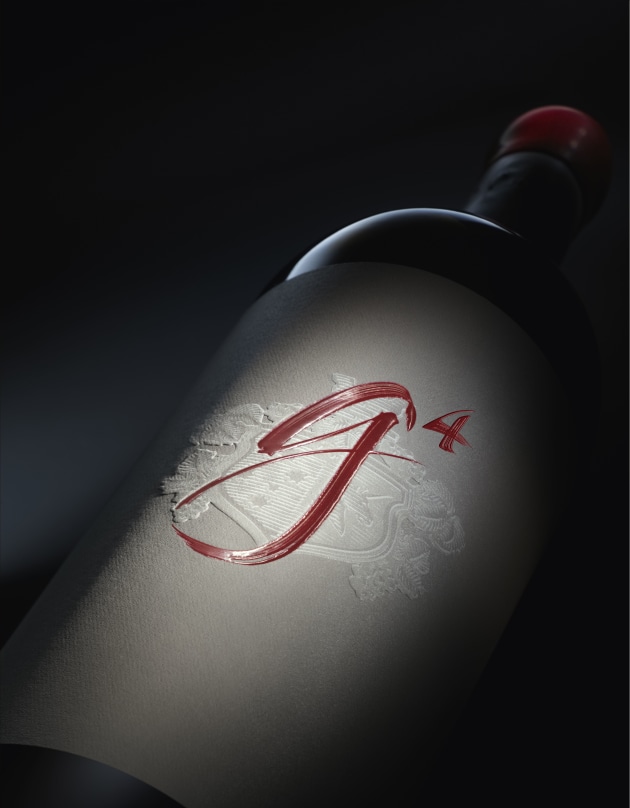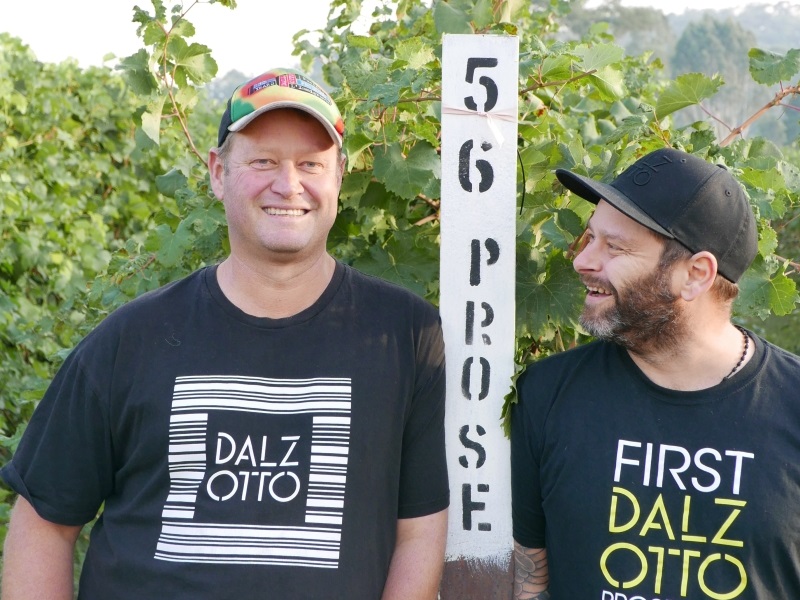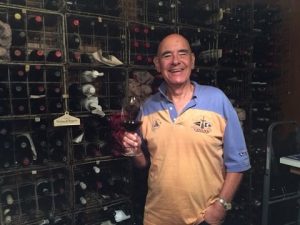Now the lock down in Victoria Australia, is over, it is time to explore the Heathcote wine region something I have not done for a few years. Over two and a half days I was surprised at what I discovered. It was the good, the bad and the ugly!
Lets go and I’ll tell you about each of the wineries with some snapshot reviews.
I stayed at the Heathcote Inn
Was clean but very basic. The restaurant serving wholesome pub food doubles as the bar and was noisy. Lines of local wine were on display facing the hot setting sun. At $130 a night it’s an in and out motel so you get what you pay for. Take your own breakfast. Fruit and granola available for $10 per head extra.
It is not a gourmet foodie destination. The Heathcote Inn, Palling Bros Brewery and Juniper Lounge all served big wholesome pub quality food. A trip to the internationally known Tooborac Hotel and Brewery was worth the trip to partake in its famous home made pies including a rabbit pie.
Wild Duck Creek
 Hidden off the beaten track. Hosts Liam and Bryan were welcoming and cheerful giving an interesting family background. The 2019 Mallard Riesling was crisp, fresh but unremarkable and a drink now proposition. Best value was the 2018 Ducks and Drakes Cabernet. Vivid red with a palate of blackberries and tobacco. $40. 90/100. The 2018 Springflat Shiraz was the pick of the lineup. Sourced from four sites it was dense in colour showing chocolate and rich dark fruits with nice acid to lift it. $65. 92/100. I did not try the 2018 Reserve at $130. Not a bad start to the weekend.
Hidden off the beaten track. Hosts Liam and Bryan were welcoming and cheerful giving an interesting family background. The 2019 Mallard Riesling was crisp, fresh but unremarkable and a drink now proposition. Best value was the 2018 Ducks and Drakes Cabernet. Vivid red with a palate of blackberries and tobacco. $40. 90/100. The 2018 Springflat Shiraz was the pick of the lineup. Sourced from four sites it was dense in colour showing chocolate and rich dark fruits with nice acid to lift it. $65. 92/100. I did not try the 2018 Reserve at $130. Not a bad start to the weekend.
Munari Wines

There were 11 wines in the portfolio – far too many. Winemaker Adrian Munari, continuing a long family tradition was quick to point out that “I need a variety to suit all palates”. On tasting was an array of back vintages of which only 4 were current. Only the 2013 India Red Cabernet appealed. Was showing its age with herbal and leather overtones and a soft finish. $30. 87/100. Of the most recent vintages the 2018 Merlot from grafted vines was light and short. Adrian admitted that it has been inconsistent and would not be made in future. $30. 86/100. Plenty of work to do here.
Vinea Marson

Mario Marson learnt his trade at St Huberts and Mt Mary and has accomplished 40 vintages in his career and now has set about establishing a vineyard of all Italian varieties. A difficult job when most people’s palate is more alined to King Valley Italian styles but of the 5 wines I looked at the 2017 Grazia, a blend of 59% Pinot Bianco, 20% Malvasia d’Istria, 16% Friulano & 5% Picolit was no doubt challenging to make. Pale straw in colour with a hint of green. The acid cut through and could have been identified as a Marsanne with butter and lemon overtones. $28. 92/100. The 2018 Rosato also got a gong. $28. 90/100. This was not the only vineyard in Heathcote that is trying to make regional Italian style. Why they are abandoning shiraz beats me. The Cambrian silky beckons. More about this later.
Tellurian

With a brand new expensive, spacious and spectacular cellar door (opened on 21 November) this was a highlight of the region visit. Certainly the 2 course lunch at $35 was delightful and you must put this on your itinerary. The wines were classy too. The 2019 Fino, 2018 Marsanne and 2019 Viognier all rated 92/100. But it was the two Shiraz’s that stood out. The just released 2019 Pastiche Shiraz (14%) won the best shiraz at the Heathcote Wine Show in November this year. The wine is well balanced with notes of plum, blackberries, pepper spice, oak, and a touch of eucalyptus. The tannins are soft and silky. The finish is long, medium dry, and has a persistent pepper spice. $28. 94/100. The 2017 Tranter Shiraz (14.5%) was another superb example of Heathcote Shiraz; excellent weight, bright red fruit and dark plum flavours with a silky mouthfeel supported by soft tannins. $40. 95/100. At last polished Heathcote Shiraz at top value. Buy.
Domain Asmara

The 2019 Infinity Shiraz (15.8%) is a class act, purple red, ripe black fruit laced with nice oak treatment at $75. 93/100. Better value is the 2018 Reserve Cabernet which displayed a long soft and lingering finish. $21. 93/100. Thats a buy! Hosts and owners Henni and Andreas Grieving then showed two Durifs. The 2019 Private Reserve was rich but on the finish was very dry. $40. 88/100. However the 2018 Infinity Durif (17.4%) was big but not as robust as a Rutherglen style. Loved the huge fruit explosion on the palate. $75. 95/100. Contract made but one of the unheralded excellent wineries in the region providing quality fruit.
Sanguine

Wine maker Mark Hunter provided a tutorial tasting of six wines starting with 2019 Rose $20. 88/100 but better wines followed. A new release 2019 Cabernet Bordeaux blend of 75% cabernet sauvignon, 15% cabernet franc and 10% merlot. Hand-picked, it is a medium bodied wine with a long finish and aftertaste full of fruit. One for Cabernet lovers at $25. 94/100. Buy. The 2017 D’Orsa Shiraz spent 18 months in oak (70% new). Hopefully over the next 5+ years the oak will cease fire, leaving a medium-bodied shiraz with fruit, oak and tannins in balance. $70. 94/100. The 2018 Inception Shiraz shares the deep colour with D’Orsa, extended maceration of 18 months in French oak (30% new). Just released it is nicely balanced with oak and long full palate with hints of pepper lingering. $40. Finally the 2019 Progeny Shiraz with plenty of show gongs spent only 9 months in French oak in an attempt to be approachable as a young wine and so can be enjoyed now. $25. 90/100. Beware the other shiraz’s have a drinking distance of up to 20 plus years! Great wines and typical fine Heathcote rich style.
Jasper Hill

Emily McNally (nee Laughton) was most generous. Her name sake top of the range shiraz is available only one bottle per person $108. But 2019 Georgia’s Paddock showed good spectrum colour, cherry berry ripe fruits, and prominent oak and tannins. Good for 15 years. $82. 95/100. But they also make 2018 Occam’s Shiraz. This is a smooth, silky smokey expression with deep raspberry vanilla, plum, blueberry and a great bargain at $46. 92/100. The tasting finished with a line up of 2006 each of Nebbiolo, Georgia’s and Emily Paddocks. The 2006 Nebbiolo was a revelation with deep colour, full through the palate holding nicely together. If you have this you are privileged. I thought the Georgia’s was past so drink now and Emily’s was still going forward. A nice comparison of the best of the 2006 vintage. Sanguine and Tellurian may not have the high regard and sought after reputation as Jasper Hill but are in the same league!
Heathcote Winery

Denise and Steve Williams were on the job here and a tasting of eight wines (10 available) between four designated ranges were presented. Too many wines – two many ranges. In the Euro range the 2020 Vermentino – grapes from McIvor Estate – was light, limey, hints of green apples and with plenty of long flavour. $27. 92/100. This variety originally grown in Italy’s Liguria region and the islands of Sardinia and Corsica is steadily growing in popularity here and is an ideal summer drink. In the Premium range the iconic reliable 2019 Mail Coach Shiraz (14.2%) now in its 30th vintage showed the new French oak up front. Needs time. $32. 92/100. In the Single Vineyard range 2018 Slaughterhouse Paddock Shiraz had loads of oak up front with eucalyptus and mint dominating. $50.86/100. The Wilkins Shiraz $105, in the Super Premium range was not tried.
Meehan Vineyard

Planted in 2005 as a family dream, but winemaker Phil Meehan sadly passed away in August 2018 leaving wife Judy and her daughter to struggle on. Condie Wines has now taken over the lease and Judy was only too delighted to chat and show what she had available for sale; vintages from 2014 to 2017. The 2016 Tempranillo was chewy and rich. $30. 90/100. Judy then kindly presented a vertical tasting of 2014, 15 and 16 Shiraz’s. 2014 was deep red in colour was full in length, nice chocolate and fruit up front and long on the palate. $60. 94/100. The 2015 finished short, stalky and a very dry finish. $55. 87/100. Finally 2016 while dry up front was sweet and juicy, not a true Shiraz style though. $55. 90/100. None had hints of pepper on the nose.
Condie Vineyard

Richie Condie is on the expansion trail with the lease of Meehan, Wanted Man vineyard 4 kms away and also has a property at Wild Duck Creek so sourcing grapes should not be a problem moving forward. Five wines were presented. The 2018 Giarracco Sangiovese matured in used three year old oak barrels and while a little sour had sweet raspberries coming through, was high in acid and finished full of subtle flavours. $30. 91/100. The 2017 Gwen Shiraz (14%) was the pick of two Shiraz’s. From two blocks it has dark fruits, with black berry, plum and spice overtones. A little stringent. $30. 90/100. I could not resist buying a Richie experiment of a 2018 Sangiovese Rose clean skin. At $15 a bargain. Clean with a long balanced palate. Move quick on this.
McIvor Estate

Another winery on the move, changing hands. It has just been purchased by Chinese interests with one partner from Sydney and the other an Adelaide Chinese exporter. Not sure they had counted on the up to 200% China import duty impost in mind. Four Italian varieties out of nine on show and once again all were back vintages on sale and tasting. Host Max Poyser was keen to talk up the quality but overall a disappointing lineup. The pick of an average lot was the 2014 Estate Merlot. Dry, a medium bodied wine with moderate acidity, with blackberries, cherries, plums, and cocoa overtones. $35. 90/100. Max was happy to discount all the wines in an effort to move them on. It will be interesting to see if this winery continues to make wine
Summary
With a few exceptions the face of Heathcote Shiraz on its dark Cambrian soils left me flat. In the reviews above it is easy to assess where the back bone of the region can be found. Certainly some good value abounds but the Italian varieties need more time and development to give the region a new focus and identity. If thats what they want.






 Dal Zotto owners: Winemaker Michael (left) and Christian Dal Zotto
Dal Zotto owners: Winemaker Michael (left) and Christian Dal Zotto  Dal Zotto is a pioneer of Prosecco in Australia. Twenty years ago, patriarch Otto Dal Zotto sourced Prosecco vine cuttings from the home of Prosecco and his home region of Veneto in north-eastern Italy, to plant at his home in King Valley.
Dal Zotto is a pioneer of Prosecco in Australia. Twenty years ago, patriarch Otto Dal Zotto sourced Prosecco vine cuttings from the home of Prosecco and his home region of Veneto in north-eastern Italy, to plant at his home in King Valley.
 James Hallidays cellar. pix Julian Kingman
James Hallidays cellar. pix Julian Kingman

 The new wedding and event venue under construction at Lake Breeze Wines.
The new wedding and event venue under construction at Lake Breeze Wines.